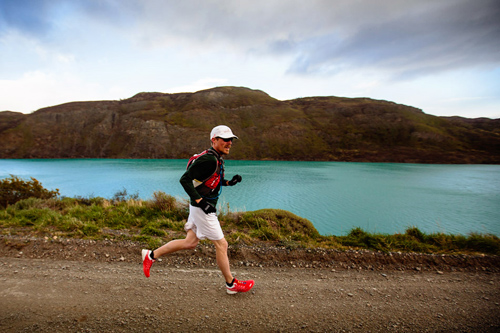“Low, light and fast.” Salomon picked those words to describe its S-Lab Sense, a racing shoe new this year that is the most minimal in the company’s line.
This is not your average trail runner. The Sense shoes cost $200 and were designed in collaboration with Kilian Jornet, one of the world’s top ultra runners.

For the past few weeks I’ve trained and raced in the shoe, including in Chile last month for the Patagonian International Marathon. In that event I ran 26 miles over rocky ground, and the shoe provided a great compromise between protection and speed.
Salomon touts natural foot motion and forefoot running with the Sense. Many shoes do that. What sets the Sense apart is its protection and support, all while keeping its light, minimal feel on the foot.
These shoes are among the lightest I have worn, at about 6.9 ounces apiece. That’s half the weight of many trail runners. They are flexible, letting my foot move naturally, and they have a low drop of about 4mm from heel to toe.
The Sense shoes include foot-cradling uppers and the solid pull-to-cinch lacing system the company is known for. There’s a bit of padding in the midsole. A thin “rock plate” film in the forefoot and a lightly treaded sole give protection and grip.

In Patagonia, I ran a 3:18 marathon on a tough course. The Sense shoes were about perfect for the venue — they provided just enough protection against the rocks while still providing something minimalist shoe junkies call “ground feel.”
To put it another way, they feel more natural. Each stride is not muted by padding in the heel and midsole like with traditional running shoes. Instead, running in the Sense shoes my feet knew they were on the ground, though without suffering the blows I associate with other minimal shoes.
On race day, I tugged the speed laces for a nice fit and took off. Marathons are no time to practice form and build foot strength, as many minimal shoes promote. Instead, the Sense’s flexible, close-to-the-ground build and light weight let me simply run hard and concentrate on speed.
At the end of the marathon my feet felt remarkably good. I was impressed with the shoes overall. While the price is high for day-to-day running, the Sense is so fast on race day that for many competitive runners the price will be worth it if you can go longer and move faster down the trail.
—Sean McCoy finished in 5th place overall in the Patagonian International Marathon. He is a contributing editor who lives in Denver.